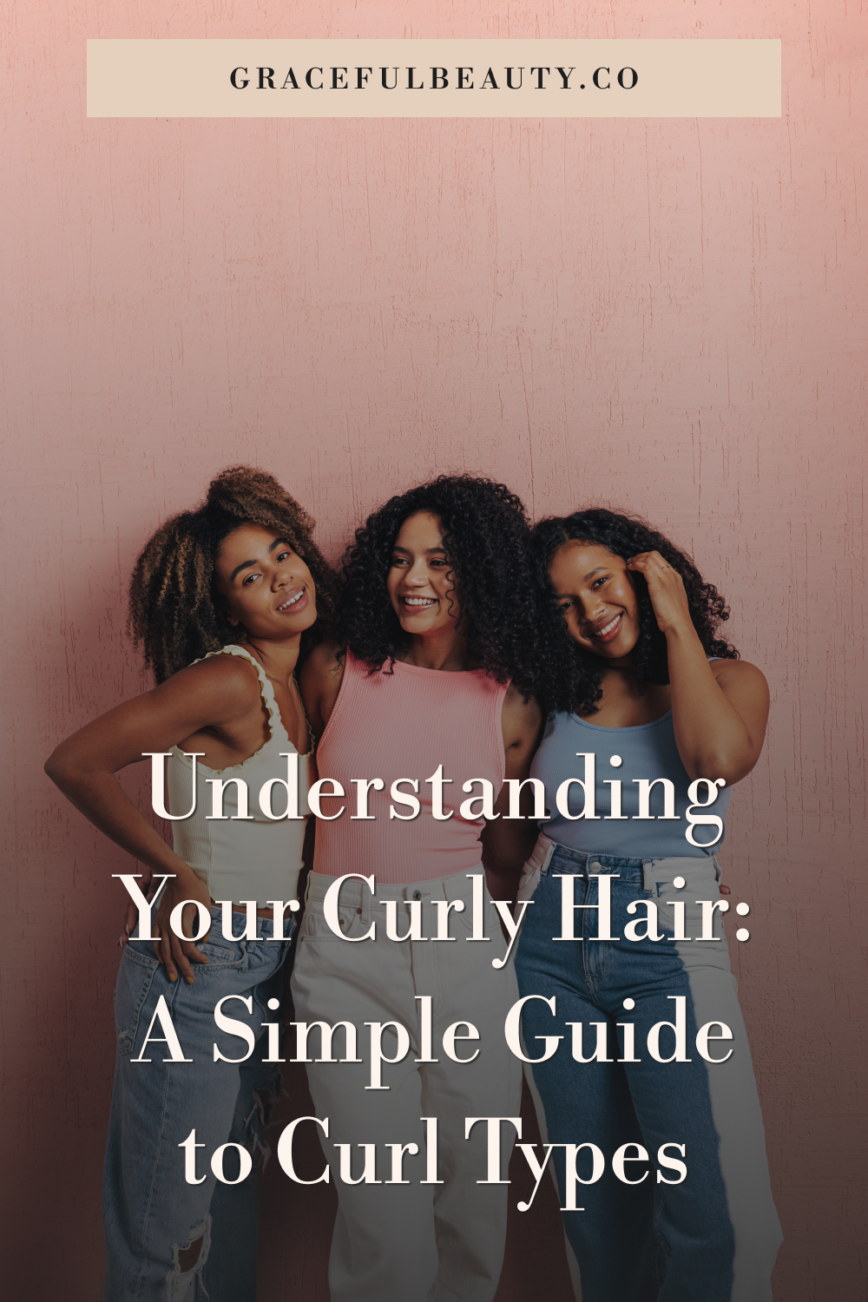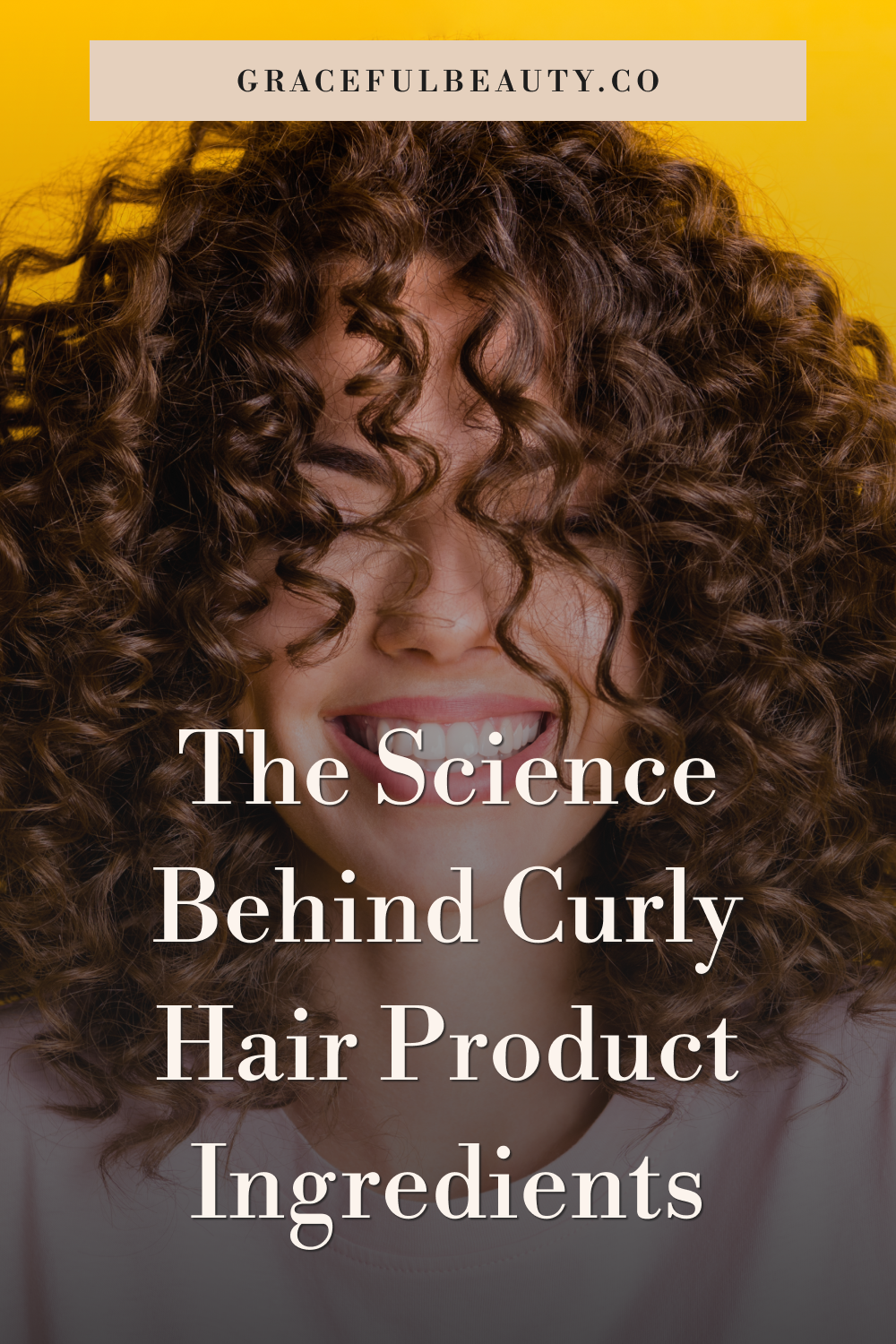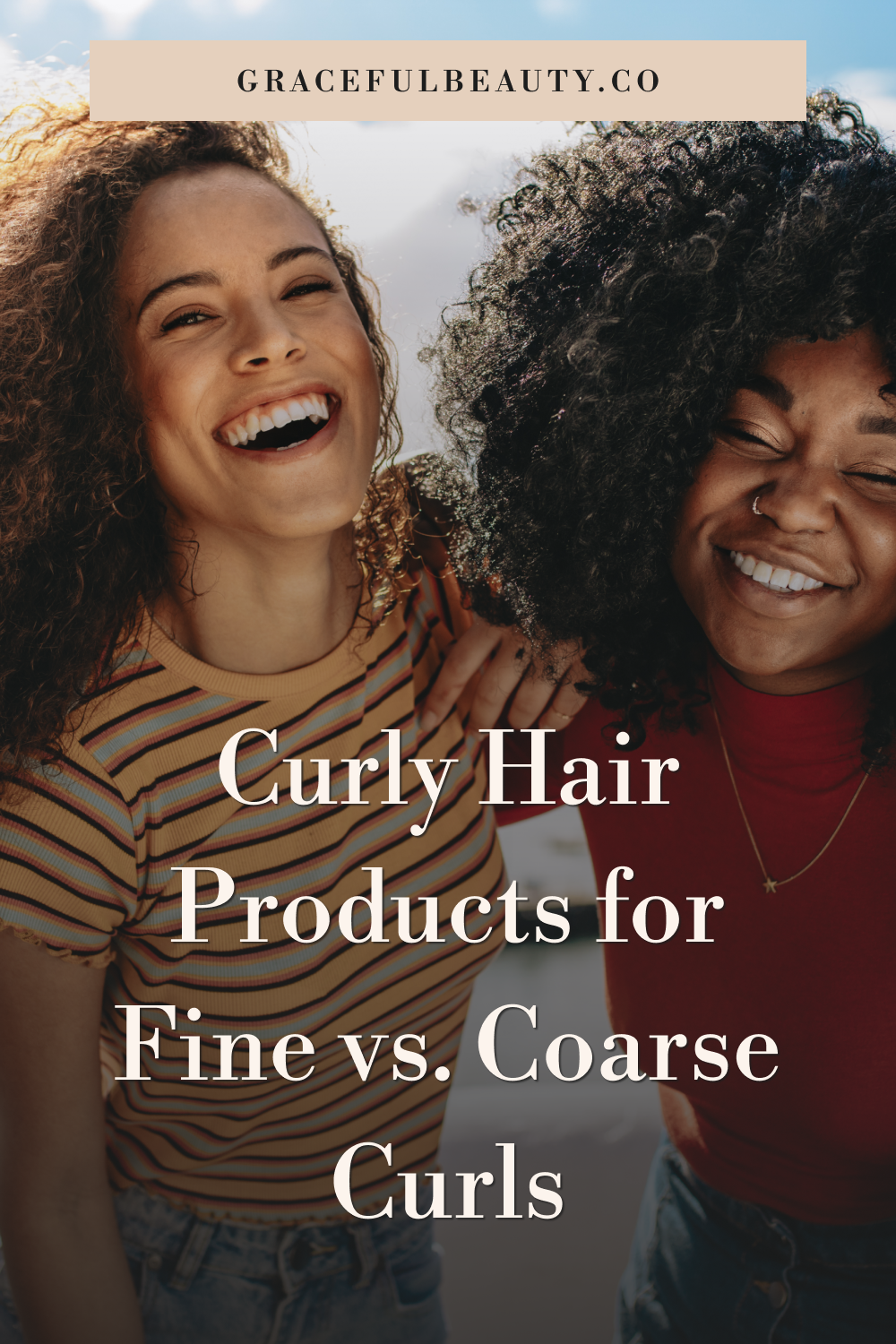
In this article, you will understand your curly hair through a simple guide to curl types.
Are you tired of dealing with your curly hair and feeling lost when trying to find the right products and styling techniques? You’re not alone. Many people struggle to identify their curl type and effectively care for their hair. The good news is that understanding your curl type is the first step toward embracing and enhancing your natural curls. By knowing your specific curl pattern, you can tailor your hair care routine and product selection to achieve the best results. In this guide, we’ll explore the different curl types and provide valuable insights to help you better understand and care for your curly hair.
The Science of Curly Hair
Curly hair is not just a visual attribute, but a result of complex biological structures and processes. Understanding the science behind curly hair involves delving into the intricate nature of hair follicle shape, the impact of hair texture, and porosity.
Understanding Hair Follicle Shape
The shape of the hair follicle plays a pivotal role in determining the curl pattern of hair. An asymmetrical, curved hair follicle results in curly hair, whereas a symmetrical follicle produces straight hair. The follicle’s shape also influences the angle at which the hair grows from the scalp, contributing to the unique characteristics of curly hair.
The Impact of Hair Texture and Porosity
Hair texture and porosity further define the behavior of curly hair. The texture refers to the thickness and diameter of individual hair strands, which can vary from fine to coarse. Porosity, on the other hand, determines how well the hair absorbs and retains moisture. Understanding these aspects is crucial in managing and styling curly hair effectively.
This foundational knowledge of the science behind curly hair sets the stage for exploring the distinct curl types and the best practices for nurturing and styling each type.
Decoding the Curl Type System
Understanding your natural hair texture is the key to effective hair care. Decoding the curl type system not only helps in identifying the uniqueness of your hair but also aids in choosing the right products and techniques to maintain and enhance your curls. Andre Walker’s hair typing method, widely recognized in the curly hair community, categorizes curls into different types based on their pattern and characteristics. Let’s delve into an overview of Andre Walker’s hair typing method and explore the significance of various curl patterns.
An Overview of Andre Walker’s Hair Typing Method
Andre Walker, well-known hairstylist and Oprah Winfrey’s longtime hair guru, introduced a hair typing system to classify different hair textures. His system classifies hair into four primary types (Type 1 to Type 4) with subcategories based on the diameter, shape, and overall look of the curls. This classification serves as a foundational framework for understanding the diverse spectrum of curly and coily hair textures. By identifying your hair type according to this method, you can tailor your hair care routine to suit the specific needs of your curls, promoting healthier and more manageable hair.
The Significance of Curl Patterns
Curl patterns play a crucial role in determining the best practices for caring for your natural hair. Different curl patterns have distinct characteristics, such as elasticity, porosity, and moisture retention capabilities. Understanding these attributes empowers individuals to select suitable hair care products and styling techniques that align with their specific curl patterns, promoting optimal curl definition and overall hair health.
Type 2 Curls: Waves
Type 2 hair, also known as wavy hair, is characterized by its “S” shaped curls and looser texture. It falls between straight (type 1) and curly (type 3) hair, making it a unique category within the Andre Walker Hair Typing System. Type 2 hair can be further classified into three subtypes: 2A, 2B, and 2C.
Characteristics of 2A, 2B, and 2C Waves
2A Waves
- Loose, barely-there waves
- Tends to be fine and thin
- Prone to becoming straight at the roots
- Requires lightweight products for volume without weighing down the hair
2B Waves
- Slightly more defined S-shaped waves
- More volume at the roots compared to 2A waves
- Can frizz easily in humid conditions
- Requires products that provide definition without adding too much weight
2C Waves
- Well-defined S-shaped waves with a more pronounced curl pattern
- More volume at the roots compared to 2B waves
- Prone to frizz and can be resistant to styling
- Requires products that offer strong hold to maintain the curl pattern
Best Practices for Managing Type 2 Hair
When managing type 2 waves, it’s important to consider the following:
- Cleansing: Use a gentle, hydrating shampoo to avoid stripping natural oils while keeping the scalp and hair clean.
- Conditioning: Opt for lightweight, moisture-rich conditioners to nourish the waves without weighing them down.
- Styling: Choose styling products specifically designed for wavy hair to enhance and define the natural wave pattern.
- Drying: Air-drying or using a diffuser on low heat can help prevent frizz and maintain the wave pattern.
- Maintenance: Regular trims and deep conditioning treatments can help keep type 2 waves healthy and vibrant.
Exploring 3A, 3B, and 3C Curl Varieties
Understanding your curly hair starts with identifying the curl pattern. Type 3 curls, also known as classic curls, are characterized by well-defined, springy curls. These curls range from loose loops to tight corkscrews, with 3A being the loosest and 3C being the tightest.
3A Curls
3A curls are large, loose curls, resembling the circumference of a piece of sidewalk chalk. These curls tend to have a lot of body and are prone to frizz. They can be easily straightened or curled with a curling iron.
3B Curls
3B curls are springy ringlets with a circumference similar to that of a sharpie marker. These curls have a medium amount of curl definition and are more prone to frizz than 3A curls. They may also shrink by 30-50% when dry.
3C Curls
3C curls, the tightest of the Type 3 category, have a circumference close to a pencil or straw. These curls are densely packed and prone to dryness and frizz. They also have a lot of volume and can vary in size.
Styling and Care Tips for Type 3 Hair
Maintaining type 3 curls involves a combination of proper styling and care techniques.
- Hydration is Key: Type 3 curls thrive on moisture, so using a hydrating shampoo and conditioner is essential. Look for products containing shea butter or coconut oil to lock in moisture and minimize frizz.
- Detangling with Care: Use a wide-tooth comb or your fingers to gently detangle wet hair. Start from the ends and work your way up to prevent breakage.
- Enhance Your Curls: Apply curl-defining cream or gel to damp hair to enhance your natural curl pattern. Scrunch your hair to encourage curl formation, and air-dry or use a diffuser to dry your curls, avoiding towel-drying, which can cause frizz.
- Protective Styling: Consider protective styles like braids or twists to minimize manipulation and retain moisture.
Type 4 Curls: Coils and Kinks
Understanding type 4 curls involves recognizing the unique characteristics of 4A, 4B, and 4C textures, along with the recommended products and techniques for managing type 4 hair.
Distinguishing Between 4A, 4B, and 4C Textures
Type 4A hair typically forms well-defined S-shaped curls and has a visible curl pattern. 4B hair, on the other hand, features more of a Z-shaped pattern with less definition and more shrinkage. 4C hair tends to form tight coils or zig-zag patterns and has the most shrinkage among the type 4 textures. Understanding these distinctions is crucial for selecting appropriate hair care products and styling methods tailored to each specific type.
Recommended Products and Techniques for Type 4 Hair
Products: When caring for type 4 hair, it’s essential to use moisturizing and nourishing products to keep the coils hydrated and defined. Look for sulfate-free shampoos, leave-in conditioners, natural oils like jojoba or argan oil, and styling creams designed for type 4 curls.
Techniques: To maintain healthy and defined coils, techniques such as the “LOC method” (Liquid-Oil-Cream) for moisture retention, finger-detangling for gentle handling, and protective styling to minimize manipulation and breakage are highly recommended.
By understanding the unique characteristics of 4A, 4B, and 4C textures and utilizing suitable products and techniques, individuals with type 4 curls can effectively embrace and manage their natural hair.
Mixed Curl Patterns: Combining Different Types
Understanding mixed curl patterns can be a game-changer when it comes to caring for your luscious locks. Many individuals have diverse curl patterns on a single head, which can range from loose waves to tight coils. Identifying these multiple curl patterns is crucial in tailoring an effective hair care routine that promotes healthy and defined curls.
Identifying Multiple Curl Patterns on One Head
It’s common for people to have a combination of curl types, resulting in various textures throughout their hair. For instance, you might have loose, flowing waves near the crown while sporting tighter, springy coils at the nape of your neck. Observing these patterns and understanding their unique characteristics can help you customize your haircare regimen to address the specific needs of each curl type.
Tailoring a Hair Care Routine for Mixed Curls
When dealing with mixed curl patterns, a tailored approach to hair care is essential. It involves using a combination of products and techniques that cater to the different textures present. For example, a lightweight leave-in conditioner might work wonders for looser curls, while a rich, hydrating cream may be more suitable for tighter coils. Experimenting with various methods and products to find what works best for each curl pattern is key to achieving well-defined, nourished curls.
It’s imperative to be patient and open to adjustments as you fine-tune your hair care routine. Embracing and celebrating the uniqueness of your mixed curl patterns can lead to a fulfilling and rewarding hair journey.
Product Recommendations for Different Curl Types
Selecting the right hair care products is crucial for maintaining healthy and defined curls. When it comes to curly hair, the type of curl pattern largely dictates the choice of products.
Type 2: Wavy Hair
For those with loose, S-shaped waves (2A), lightweight products such as mousses and texturizing sprays work well to enhance the natural texture without weighing it down. Moderate-hold gels can be beneficial for 2B waves, while those with 2C waves may benefit from curl creams and light-hold gels to control frizz and define curls.
Type 3: Curly Hair
Individuals with well-defined, springy curls (3A) should opt for curl-enhancing creams and leave-in conditioners, while those with 3B curls benefit from anti-humidity gels and defining custards to maintain shape and combat frizz. Tight corkscrew curls (3C) require rich, moisturizing products like butters and styling creams to enhance definition and manageability.
Type 4: Coily Hair
Coily hair (4A) thrives with creamy, hydrating leave-in conditioners and curl-defining creams to add moisture and manageability. For tightly coiled hair (4B, 4C), thicker butters, oils, and deep conditioning treatments are essential for moisture retention and curl definition.
The Role of Ingredients in Curly Hair Care
Understanding the role of ingredients is fundamental in selecting the right products for curly hair. Look for moisturizing components such as shea butter, coconut oil, and glycerin to maintain hydration and promote curl definition. Avoid products containing sulfates and silicones, as these can strip moisture and weigh down curls. Opt for gentle, sulfate-free cleansers and silicone-free styling products to preserve the natural integrity of curly hair.
Common Mistakes to Avoid with Curly Hair
When it comes to taking care of your curly hair, there are common missteps that can hinder your hair’s health and appearance. By understanding these mistakes, you can make informed decisions to keep your curls looking their best.
Missteps in Styling and Washing
Over cleansing your hair can strip it of its natural oils, leading to dryness and damage. It’s advisable to wash textured hair once or twice a week to maintain its moisture and health. Additionally, improper blow-drying techniques, such as using hot air directly on your hair, can cause frizz and damage your strands. Opt for air-drying or use a diffuser attachment when blow-drying to preserve your curl pattern and minimize heat-related harm.
Product Overuse and Buildup Issues
Using excessive hair products can lead to buildup, weighing down your curls and affecting their natural bounce and definition. Look for products containing moisturizing ingredients like coconut oil, shea butter, and argan oil to provide the necessary hydration without causing buildup. In addition, be mindful of using terry cloth towels, as their texture can cause frizz and absorb too much moisture from your hair. Consider using a cotton T-shirt or a microfiber towel for gentler drying and reduced tangling.
Final Thoughts
Understanding your curl type is essential for choosing the right products and styling techniques. By identifying whether you have Type 2, 3, or 4 curls, you can tailor your hair care routine to best suit your specific needs. Whether you have loose waves or tight coils, knowing your curl pattern will empower you to embrace and enhance your natural hair texture. Keep in mind that experimenting with different products and methods may be necessary to find what works best for you. With this knowledge, you can confidently care for and style your curly hair with ease.
























